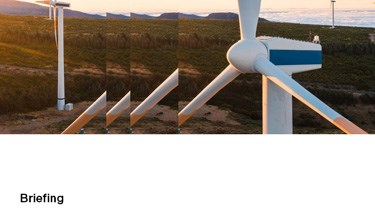EU regulation establishing a carbon border adjustment mechanism has entered into force
The Regulation establishing a Carbon Border Adjustment Mechanism (hereafter “CBAM”) has been published in the EU Official Journal on 16 May 2023 and thus officially entered into force the day after, on 17 May 2023. The publication thus triggers the timely adoption process for related delegated and implementing acts.
To provide businesses and authorities with legal certainty and stability, the CBAM will be implemented gradually and will initially apply only to a selected number of goods at high risk of carbon leakage: cement, iron and steel, aluminium, fertilisers, electricity, and hydrogen as well as some precursors and downstream products made from cement, iron, steel, and aluminium (see Annex I of the CBAM Regulation for the concerned CN codes). Only imports of these goods from non-EU countries, with the exclusion of third countries who participate in the EU’s Emissions Trading System (hereafter “ETS”) or have a similar emission trading system are covered. The mechanism does not, however, establish quantitative limits on imports, therefore trade flows are not restricted. The CBAM will gradually replace the EU ETS for the goods covered by the new mechanism, and the corresponding phasing-out of ETS free allowances will take place in parallel with the phasing-in of the CBAM, starting in 2026 and ending in 2034.
During the transitional phase, which starts on 1 October 2023, EU importers will be obliged to report greenhouse gas emissions (hereafter “GHG”) embedded in their imports on a quarterly basis. The last CBAM quarterly report should be submitted by 31 January 2026. From 1 January 2026, the CBAM will apply in its integrity, obliging EU importers to declare, by 31 May each year, the quantity of goods and the embedded emissions imported into the Union the previous year, and to surrender so-called CBAM certificates, whose price will be calculated based on the weekly average auction price of the EU ETS allowances, expressed in euro/tonne of CO2 emitted. The first CBAM declaration should thus be submitted by 31 May 2027.
During the transitional phase, the European Commission (hereafter “Commission”) will monitor the functioning of the CBAM, with a review of the CBAM planned before the end of the transitional phase, by mid-2025. As part of this evaluation, the Commission will assess the product scope of the regulation, with a view to including further goods by 2030.
In addition to this evaluation, the Commission will adopt implementing acts, which will specify the rules and requirements for the reporting of emissions and the procedures for the submission of the declarations. The draft implementing act should be published in the second week of June 2023 and will be adopted by the Commission after consultation of the so-called CBAM Committee, which will be composed of experts from EU Member States.
For further information on the CBAM and its implications for companies please see our related News Alerts here and here and do not hesitate to reach out to our international and EU trade and energy teams directly.
Well
informed
Subscribe to our newsletter now to stay up to date on the latest developments.
Subscribe now








